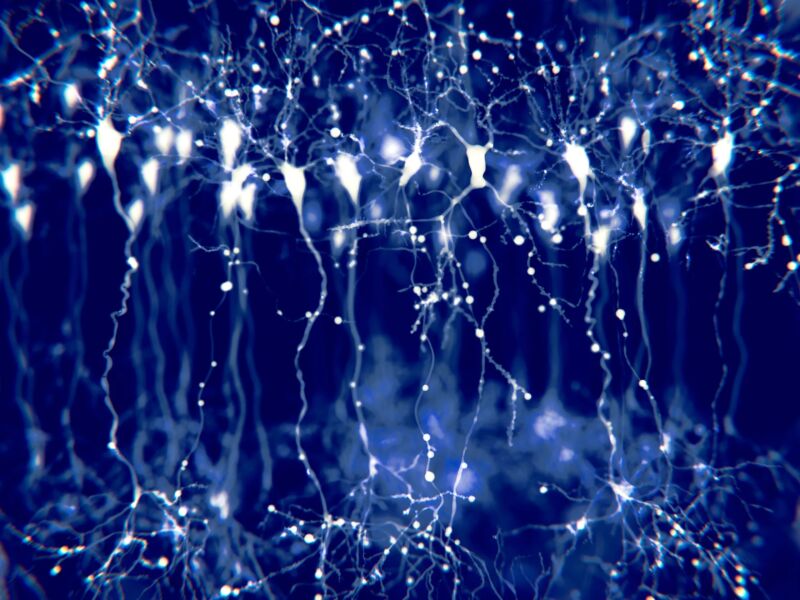Huge new data set pushes limits of neuroscience

Enlarge (credit: Juan Gaertner / Getty Images)
There's a video that's shown in almost every introductory neuroscience course. It doesn't look like much-a bar of light shifting and rotating across a black screen while the background audio pops and crackles like the sound of a faraway fireworks show. Dry stuff, until you learn that the pops represent the firing of a single neuron in the brain of a cat, who is watching the bar move on the screen. When the bar reaches a specific location and lies at a particular angle, the popping explodes in a grand finale of frantic activity. The message is clear: This neuron really, really cares about that bar.
The experiment shown in the video was performed by David Hubel and Torsten Wiesel in the 1960s and helped scientists infer basic principles about how the visual system works. For decades since, neuroscientists have stuck thin, metal electrodes into the brains of mice, finches, and monkeys to spy on individual neurons and figure out what sets them off. There are neurons that respond to specific colors or shapes; or to particular locations in space or the direction of one's head; or to whole faces or individual features.